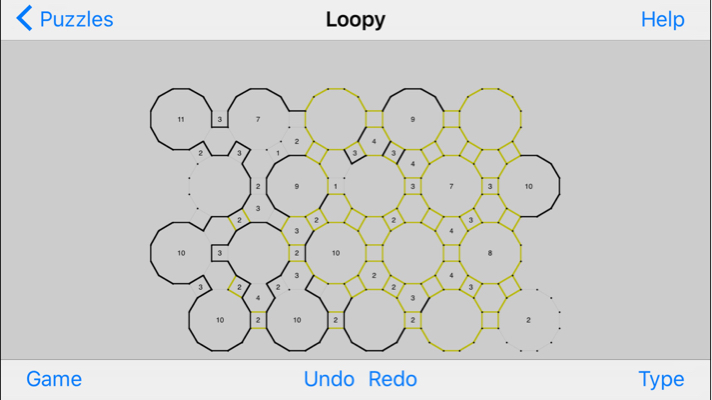I am stuck on the game Loopy inside of Simon Tatham's Portable Puzzle Collection. I do recommend this puzzle collection, and it's available on several platforms:
- Online (you can play this exact puzzle instance)
- iOs
- Android
The type is 4 X 5 Great Dodecagonal – Hard. The specific game instance is: 5x4t10:B37e94f2329321a1b433374a3bAaA3b432a2Ad2a3c28c3Aa223A32a2a222b4a3a2a. It appears to work on any of the above platforms.
For 3 days now I've been staring at this in brief moments on the bus or just before falling asleep, trying to make progress by pure deduction alone. What am I missing? Or do I have to just start trying things such as connecting two segments and seeing which choices can't be made to work?
Here is my progress so far:
Rules
All the lines start as yellow. You are to make a single unbroken circuit with no intersections. Each number is a clue stating how many of that shape's edges are filled. You win when you make a black circuit that fulfills all the clues perfectly. The yellow lines can be removed as an aid to solving, but do not affect winning.



